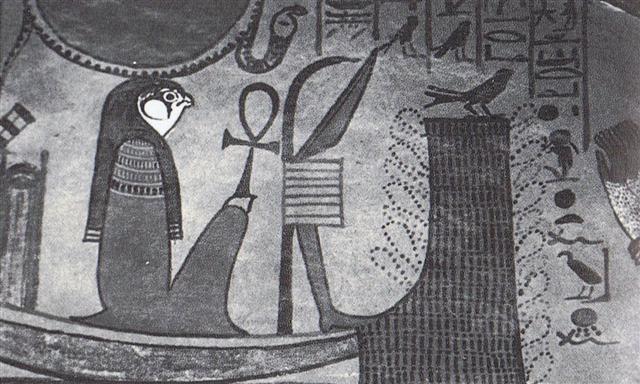1. Ira drilled more than one hole and this part of the explorer's story is much too complicated to round up quickly, we must return to it later on. And we cannot yet return to the point in the story when they were setting out to sea from the old homeland, because we must first complete at least a few of the threads we have begun to follow. I have a glyph type named kara etahi ('one wing') as Metoro expressed it:
We should remember: ... An old native declared: 'Rehua is a star, a bird with two wings; one wing is broken. Under the unbroken wing is Te Waa-o-Tamarereti (the Canoe of Tamarereti is the Tail of Scorpius in this instance). When Rehua mates with his wife Pekehawani (a star close to Antares) the ocean is windless and motionless.' Antares, visible in the morning sky of December-January, came to stand for summer heat; hence the saying, 'Rehua cooks (ripens) all fruit'. The generally accepted version of the Rehua myth, according to Best, is that Rehua had two wives, the stars on either side of Antares. One was Ruhi-te-rangi or Pekehawani, the personification of summer languor (ruhi), the other Whaka-onge-kai, She-who-makes-food-scarce before the new crops can be harvested. My example of kara etahi shows a bird looking up, a body posture similar to that of the newborn Rain God in his 10th station:
The kara etahi bird has another type of beak than manu rere, and he must be another type of bird:
The reason we can see only one wing could simply be because we are looking at the bird in profile, with his other wing hidden at the back side of the first wing. Such indeed is also the case with Sun. He has 'two wings' (2 'lands' in the sky, his summer maid and his winter maid), but we cannot see more than one half of them. The sky dome presents only 1 half of the whole 'calabash', and the observer is in its center:
This picture (from Makemson) is essential. There are several nested hard sky shells above and what we can see from below is therefore the result of overlapping events in these skies. When longdistance canoes are making voyages across the sea they must find holes in the shells through which to navigate. Stars show the navigators where to go. Stars rise (and descend) through such holes at the horizon. To observe stars (excepting Sun of course) we must wait for the night, which also my kara etahi bird explains by holding his wings at the back. His back side represents his manu rere past, and in front lies his daytime, he is a juvenile. His position is therefore quite similar to how the swallow is looking for dawn from the bow of the Sun ship in the dark waters of the night (picture from Wilkinson):
|




